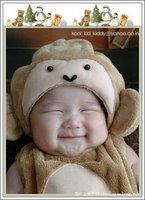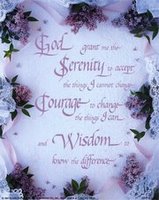All play is physical for a young preschooler, which is why it's ideal to make a wide variety of playthings available to your child. Each stimulates his growth in body and brain in different ways. A range of toys wards off boredom, too.
That doesn't mean you need to buy out the toy store. Simply make sure that your child's toy box provides a range of different kinds of play experiences — and do lots of trades with other parents or happily accept hand-me-downs.
Maybe your child never liked a particular toy truck or has two of something. Could you trade the spurned toy or duplicate for something he hasn't seen before?
Choosing toys from each of the following categories is a great way to offer well-rounded play that encourages physical development.
For large motor skills
Choose toys that emphasize coordination and balance, and build arm and leg strength.
- Push or pull toys: Try pretend lawn mowers, shopping carts, or vacuums; baby carriages; animals on a string; a light wheelbarrow.
- Ride-on toys: These require foot power and can help improve balance. Choose wagons, wide low-to-the-ground vehicles (without pedals at first, then low tricycles once your child can reach them, around age 3 or 4). Avoid battery-powered ride-on toys (aside from safety concerns, it's better for your child to get the exercise).
- Sports equipment: Playing catch improves hand-eye coordination and involves running, too. Start with large rubber and foam balls. Kicking the ball is also important.
- Action toys: A low plastic structure that includes a slide and climbable surfaces can be kept indoors or out. (If you don't have room for it, playground visits are a good alternative.) Also consider play tunnels, swings, spinning seats, sofa cushions arranged as an obstacle course, or large cardboard cartons to crawl through.
- Rockers: Rocking horses, rocking vehicles, and rocking chairs all provide the foundation for imaginative play.
For fine motor skills
Choose toys that involve hand-eye coordination. Your child may not be adept at fine-motor action yet, but this kind of play provides practice.
- Art supplies: Always make available different types of paper and large-sized crayons and pencils, sidewalk chalk, watercolors, washable markers, coloring books, and play clay.
- Toys that make patterns: Felt boards, magnetic boards, peg boards with large pegs, and matching games involve precise hand movements.
- Stacking and building toys: Any kind of blocks work well (wooden, plastic, foam, cardboard), as do stacking cups and rings (baby toy holdovers that young preschoolers still enjoy). Shape sorters that allow a child to sort by color and shape appeal to younger preschoolers.
- Toys to manipulate: At 2, your child may still enjoy knobbed wood pieces but is getting ready to move onto jigsaws of up to 20 pieces or foam puzzles with large interlocking pieces. Also good: Lacing cards, large threading beads, tea sets, musical instruments.
For language skills
Don't forget the following sorts of toys, which emphasize speaking, music, and pre-reading skills.
- Books: Make a wide variety available, from picture books to simple nonfiction you can read to your child. Replenish often with library trips, bookstore visits, and yard sales.
- Dramatic play props: Pretend play encourages making up stories. Include dress-up clothes, miniature household props, play sets (dollhouse, farm, soldiers, castle), dolls, action figures, and dinosaurs.







No comments:
Post a Comment